Written with contributions by Shelby Pritchard, former SDSU Extension Pest Management Specialist.
Originally Submitted: June 9, 2022
Hover flies are sometimes called flower flies. It’s important to note that whatever name is used to describe them, they shouldn’t ever be considered a pest. Although they may mimic the colors of wasps, they have no stinger and, therefore, cannot sting. When it comes to insect pollinators, bees are what typically come to mind. However, many other types of insects are also responsible for some degree of pollination. In this article, we will focus on the syrphid fly as both an important pollinator and a beneficial insect predator.
Hover flies are true flies and belong to the family Syrphidae within the order Diptera. They undergo complete metamorphosis, meaning that they have four life stages (i.e. egg, larva, pupae and adult).
Identification
Egg
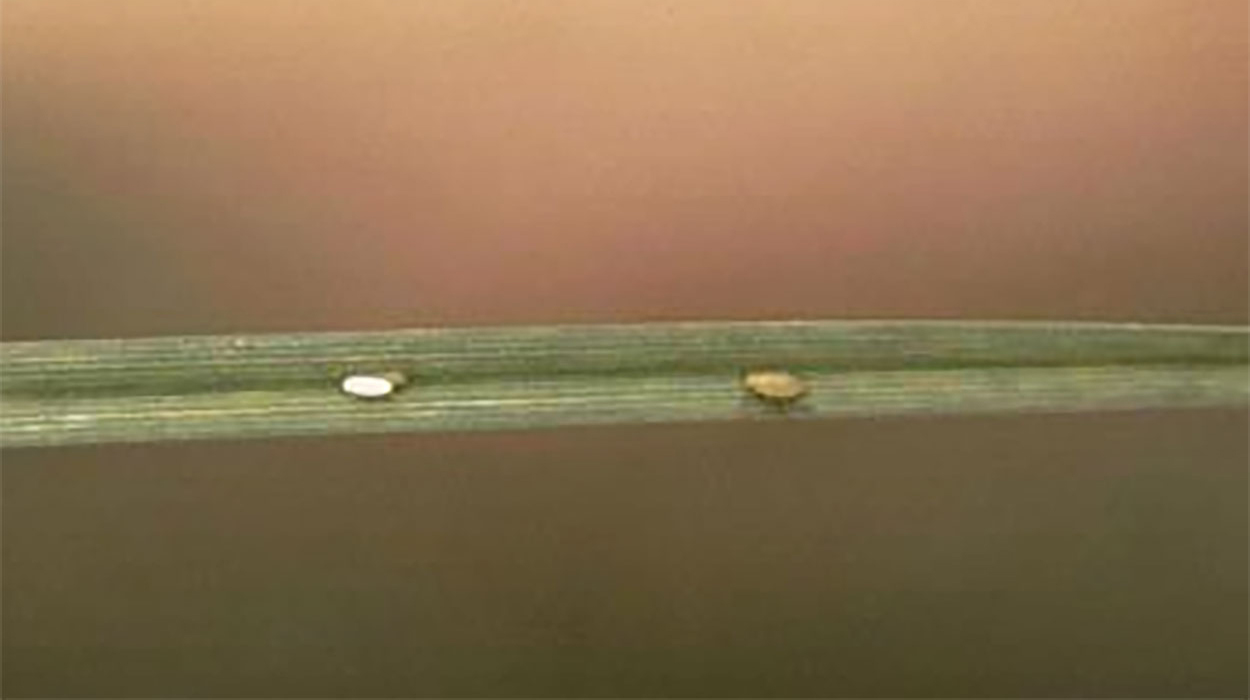
Eggs are oblong and creamy white in color. They are approximately 1/16 of an inch in length and resemble tiny grains of rice (Figure 1).
Larva
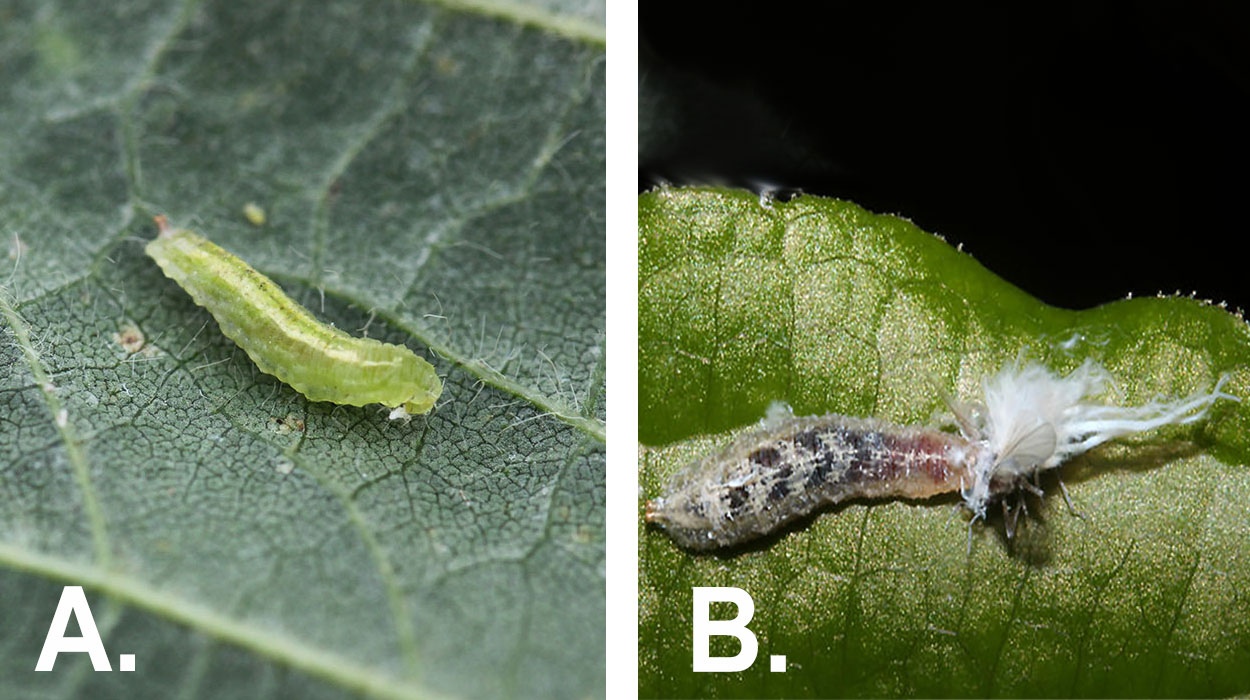
Larvae vary in color from creamy white, to brown, to green, to yellow, and they are all somewhat translucent. They undergo three growth stages (instars) that range in size from 1/6 of an inch to less than ½ of an inch. The body tapers towards an undistinguished head that lacks eyes, legs and chewing mouthparts (Figure 2-A). These mouthparts are used to capture and consume prey (Figure 2-B).
Pupae
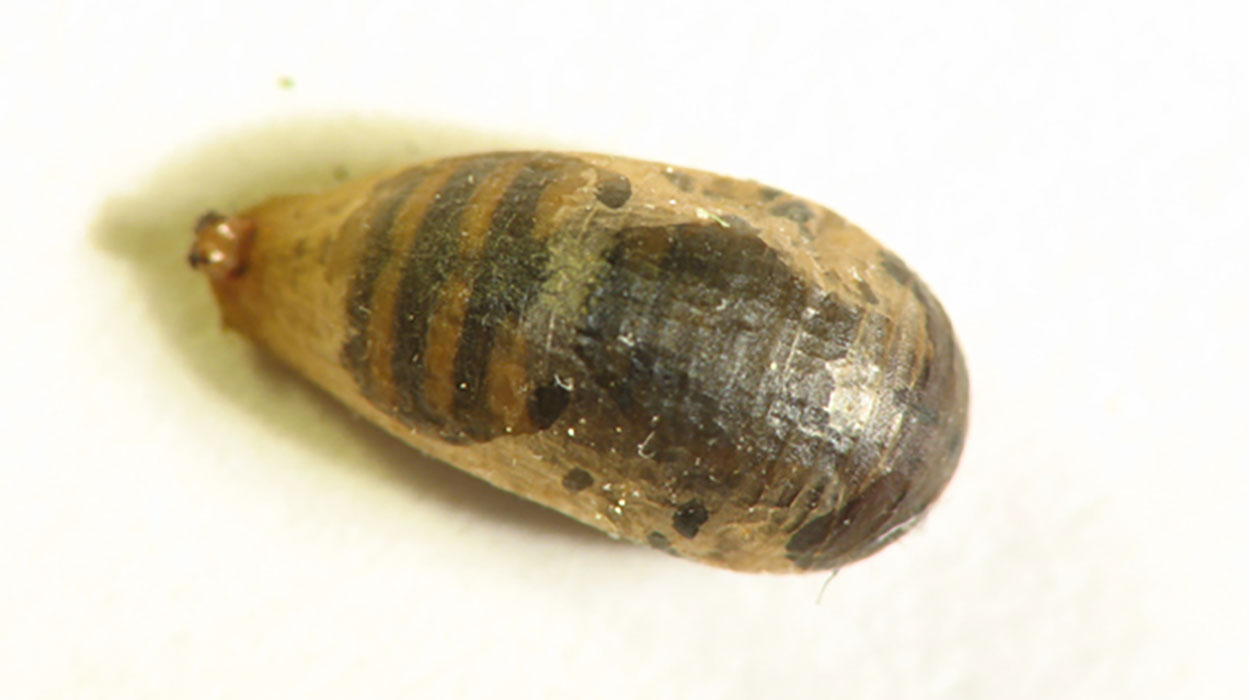
The pupae are shaped like a teardrop and are approximately ½ of an inch in length. The tapered end has two small projections sticking out from it (Figure 3).
Adult
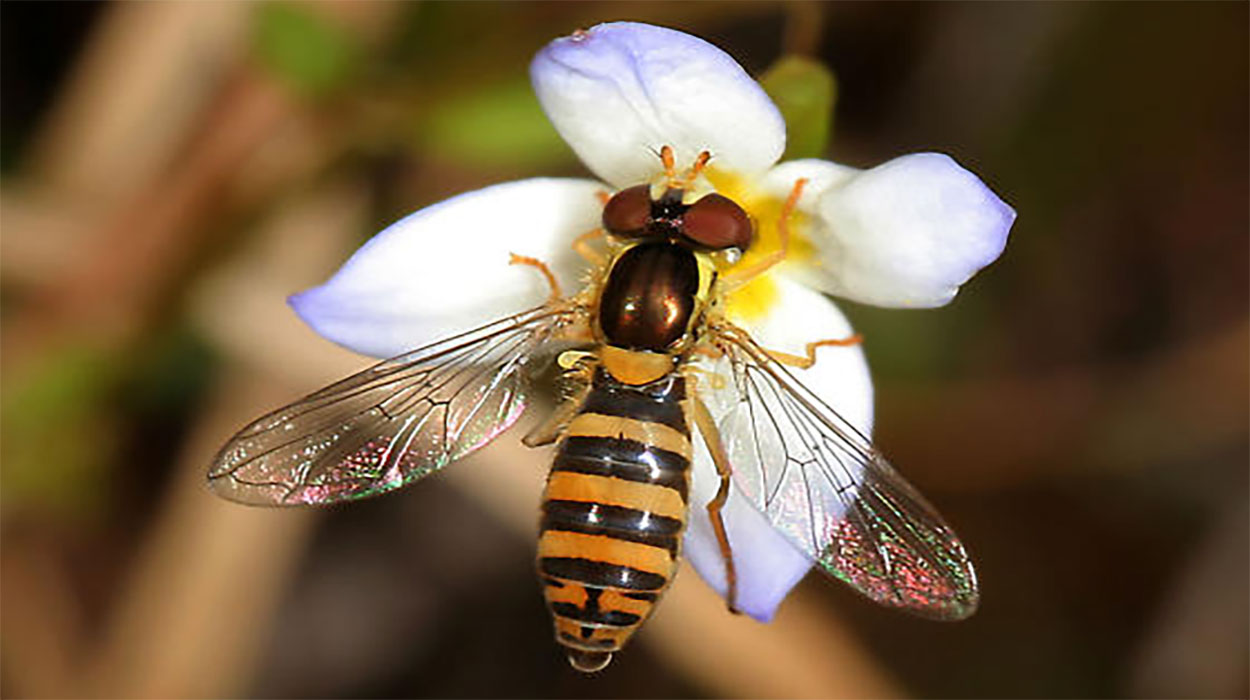
Depending on the species of hover fly, adults can range in size from ¼ of an inch to ¾ of an inch in length. Most adults have black bodies with yellow, orange or white bands. They have one pair of wings, broad heads with large eyes, and distinct short antennae (Figure 4). Adults tend to get confused with bees and wasps, but they lack a stinger or biting mouthparts and are considered harmless.
Lifecycle
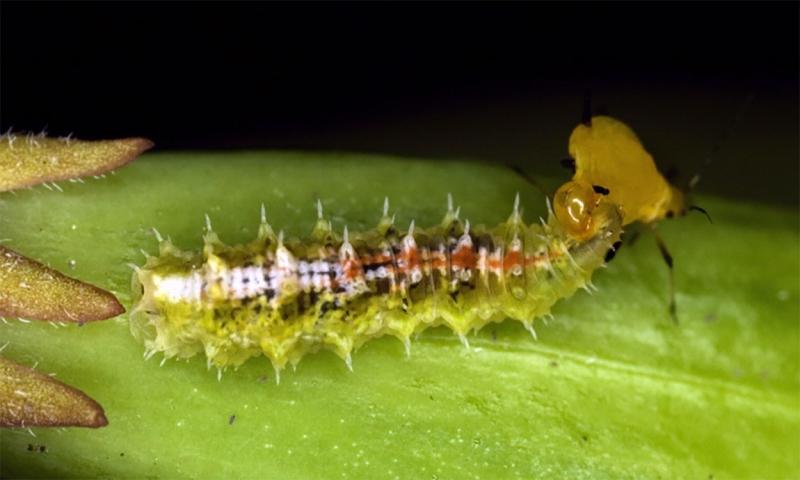
In South Dakota, there are multiple generations of hover flies per year. Hover flies can almost always be found in landscapes with available flowers and an abundance of prey, including, but not limited to, gardens, roadsides and in agricultural fields. Adult hover fly emergence depends on many environmental factors but tends to occur when aphid populations are present. Females lay eggs singularly on foliage nearby or amongst an aphid colony. The larva hatch after approximately two to three days and begin feeding on aphids or other insects that happen to be within reach (i.e. mealybugs, mites, or scales). They use piercing mouthparts to lift prey into the air while extracting their internal contents (Figure 5). Larvae undergo three growth stages (i.e., instars) and are capable of consuming hundreds of insect pests, specifically aphids, throughout the course of their development. Before pupation, the last instar larva will migrate or move to a suitable location with higher humidity, like under leaf litter or in topsoil near host plants.
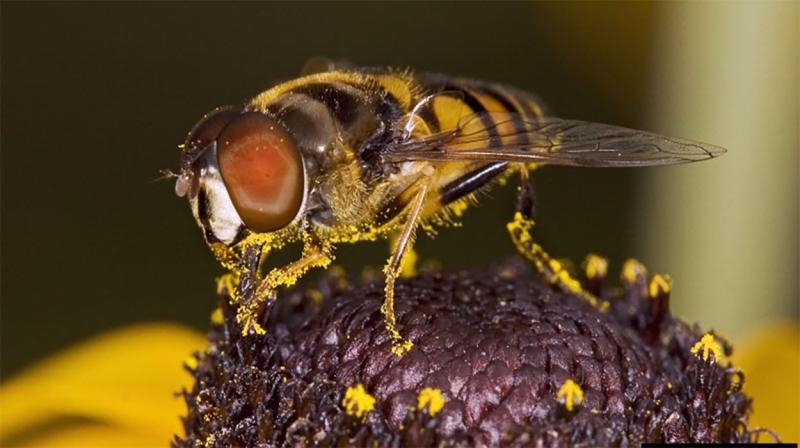
A new generation of adults will emerge after around one to two weeks and begin mating, laying eggs and foraging for nectar. While foraging for food, adults unknowingly pollinate the wide variety of plants that they visit (Figure 6). The entire lifecycle will continue until cold weather approaches. Most species of syrphid flies will overwinter as pupae and emerge as adults once the weather warms up and food becomes available again.
Conservation
It’s important to try and encourage beneficial insect populations whenever possible. Hover flies may resemble stinging wasps or bees, but they are completely harmless and play multiple, beneficial roles, including pest suppression and pollination services. One simple action to draw in beneficial insects is to plant plants with varying bloom times to provide a continuous season-long bloom. Creating a space with lots of variety can also reduce the need to travel long distances for food. Even with proper habitat and forage availability, many pollinators are still struggling due to the use of insecticides. Always remember to read the label before using any type of chemical, avoid spraying when plants are in bloom and only use them as a last resort.


